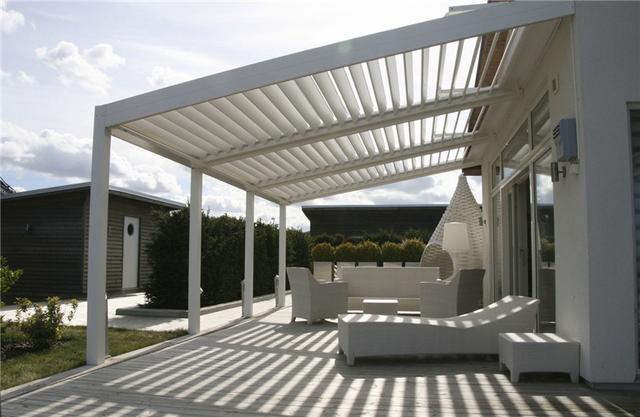It was his seventh day installing the pergola in Mexico.
Li Ming wiped sweat from his forehead, gazing at the eagle circling over the mountaintop. The concrete mixer’s roar startled the bird, sending it soaring toward the Oaxaca Valley
. It was his seventh day installing the pergola in Mexico. The ranch wind carried the pungent scent of cacti, fluttering the blueprints like restless wings.
"Li, should we sprinkle agua bendita on the volcanic rocks in the gabion?" Pedro, the Mexican foreman, joked while shaking a silver flask, his Guadalupe Virgin pendant glinting in the sun. They were hauling steel beams by mule train—hooves sparking against lava rock where trucks couldn’t reach, embodying the design philosophy of "coexisting with nature." Three days earlier, a hardware store owner had thrust dried chili peppers into Li’s toolbox: "Para ahuyentar los malos espíritus," she’d said, her eyes piercing through his unease about cliffside installations.

When the cantilevered beam rose, a shepherd passed by with bleating goats. An old man in a wide-brimmed hat played Cielito Lindo[*] on a clay flute, the notes mingling with clanging metal in the valley. Suddenly recalling the wavy ornamentation on the blueprint’s corner, Li Ming chiseled Aztec sun patterns into the steel joints overnight—inspired by the Feathered Serpent reliefs at Mexico City’s Anthropology Museum
At the inauguration feast, the ranch owner grilled beef tacos wrapped in smoky corn tortillas under the pergola’s stone walls. Pedro miraculously produced tequila; salt melted on Li’s palm into a briny crescent. When the Milky Way framed itself within the steel-framed skylight, a mariachi band’s accordion erupted. Workers stomped their boots in a jarabe dance, red skirts swirling like flames from Mayan murals
"This pergola will cast its shadow into the city at sunrise," the owner said, pointing toward Querétaro 20 kilometers away as moonlight dripped along the beams into the gabion cracks. Li suddenly understood the blueprint’s footnote: "A landscape doesn’t need architecture—it needs a mouth to speak." The wind swept through the structure, carrying the fragrance of cacti awakened by last night’s rain. He thought of the lattice windows of Suzhou gardens—proof that divine craftsmanship converges across latitudes and longitudes.